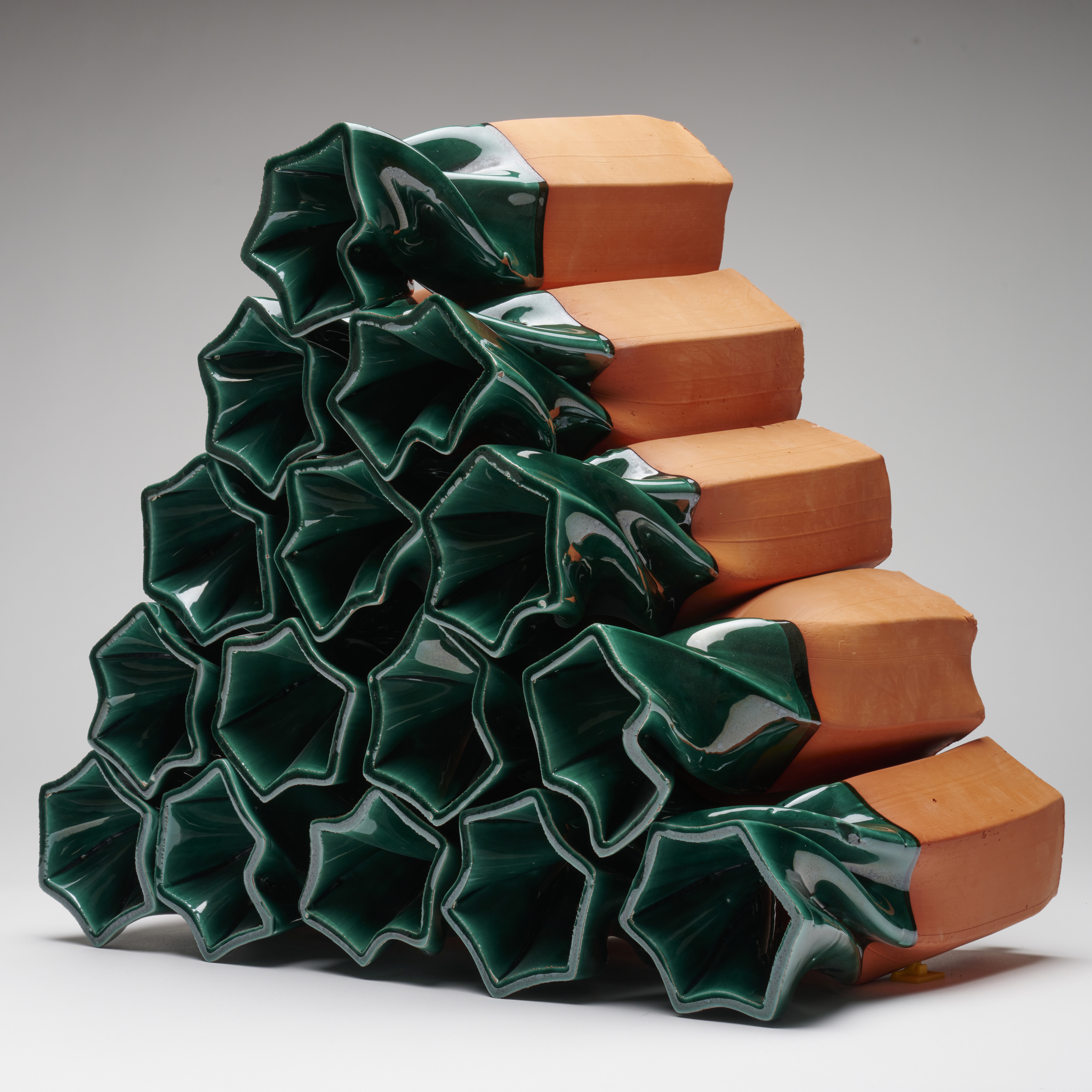A Multidisciplinary Approach to the Development of Thermal Clay Modules
DOI:
https://doi.org/10.7577/formakademisk.5424Keywords:
Ceramics, crafting, virtual design-simulation, multidisciplinary collaboration, clay extrusionAbstract
This study focuses on the idea that industrial production methods, combined with a craft-based approach, enable the production of distinctive expressive thermal functionalities. We developed extruded modules based on a hands-on explorative craft approach in parallel with virtual simulations to explore how heat and cold are transported dynamically through building modules. This paper discusses the developed method and process used in a multidisciplinary approach that combines the quality of craft-based practice with architecture, engineering and programming, focusing on how craft practitioners experiment with material, technique and aesthetics in such a multidisciplinary approach. In this study, immediate concrete design proposals demonstrated a helpful way of establishing common ground for multidisciplinary collaboration. Concrete design proposals are pivotal in addressing the suggested design’s advantages and disadvantages and clarifying the differences and potentials between the specialisations in question. Based on the initial design proposals, it was clear how the craftsperson’s previous experiences within crafts practice quickly led to the identification of realisable solutions based on experimental setups and aesthetic solutions and, at the same time, was able to foresee possible complications.
References
Alvarez, A. (n.d.). Anton Alvarez. http://antonalvarez.com/
Binder, T., & Redström, J. (2006). Exemplary design research. DRS Biennial Conference Series. https://dl.designresearchsociety.org/drs-conference-papers/drs2006/researchpapers/51
Brinck, I., & Reddy, V. (2020). Dialogue in the making: Emotional engagement with materials. Phenomenology and the Cognitive Sciences, 19(1), 23–45. https://doi.org/10.1007/s11097-019-09629-2
Bundgaard, R. (2021). DIVERSITY by Strøjer Tegl – Klink, R. http://cargocollective.com/klink/Product-DIVERSITY-by-Strojer-Tegl
Dormer, P. (1994). The art of the maker. Thames and Hudson.
Hawkes, D. (2019). The environmental imagination: Technics and poetics of the architectural environment (2nd ed.). Taylor & Francis. https://doi.org/10.4324/9781315210575
IPCC. (2021). Climate change 2021: The physical science basis, United Nations. Cambridge University Press. https://doi:10.1017/9781009157896.
Johns, R. L., Kilian, A., & Foley, N. (2014). Design approaches through augmented materiality and embodied computation. In W. McGee & M. Ponce De Leon (Eds.), Robotic fabrication in architecture, art and design 2014 (pp. 319–332). Springer International Publishing. https://doi.org/10.1007/978-3-319-04663-1_22
Joshi, D. K. (2018). Passive cooling techniques in ancient Indian buildings: A study. International Journal of Architectural Heritage, 1(2), 11–20. https://doi.org/10.37628/.v1i2.421
Leach, B. (1976). A potters book. Faber & Faber.
Moe, K. (2013). Convergence: An architectural agenda for energy. Routledge & CRC Press. https://www.routledge.com/Convergence-An-Architectural-Agenda-for-Energy/Moe/p/book/9780415824910
Sennett, R. (2008). The craftsman. Yale University Press.

Downloads
Published
How to Cite
Issue
Section
License
Copyright (c) 2023 Flemming Tvede Hansen , Isak Worre Foged, Vasiliki Fragkia

This work is licensed under a Creative Commons Attribution-NoDerivatives 4.0 International License.
Authors who publish with this journal agree to the following terms:
- Authors retain copyright and grant the journal right of first publication with the work simultaneously licensed under a Creative Commons Attribution 4.0 License that allows others to share the work with an acknowledgement of the work's authorship and initial publication in this journal.
- Authors are able to enter into separate, additional contractual arrangements for the non-exclusive distribution of the journal's published version of the work (e.g., post it to an institutional repository or publish it in a book), with an acknowledgement of its initial publication in this journal.
- Authors are permitted and encouraged to post their work online (e.g., in institutional repositories or on their website) prior to and during the submission process, as it can lead to productive exchanges, as well as earlier and greater citation of published work (See The Effect of Open Access).
- The author(s) must manage their economic reproduction rights to any third party.
- The journal makes no financial or other compensation for submissions, unless a separate agreement regarding this matter has been made with the author(s).
- The journal is obliged to archive the manuscript (including metadata) in its originally published digital form for at least a suitable amount of time in which the manuscript can be accessed via a long-term archive for digital material, such as in the Norwegian universities’ institutional archives within the framework of the NORA partnership.
The material will be published OpenAccess with a Creative Commons 4.0 License which allows anyone to read, share and adapt the content, even commercially under the licence terms:
This work needs to be appropriately attributed/credited, a link must be provided to the CC-BY 4.0 licence, and changes made need to be indicated in a reasonable manner, but not in any way that suggests that the licensor endorses you or your use.



